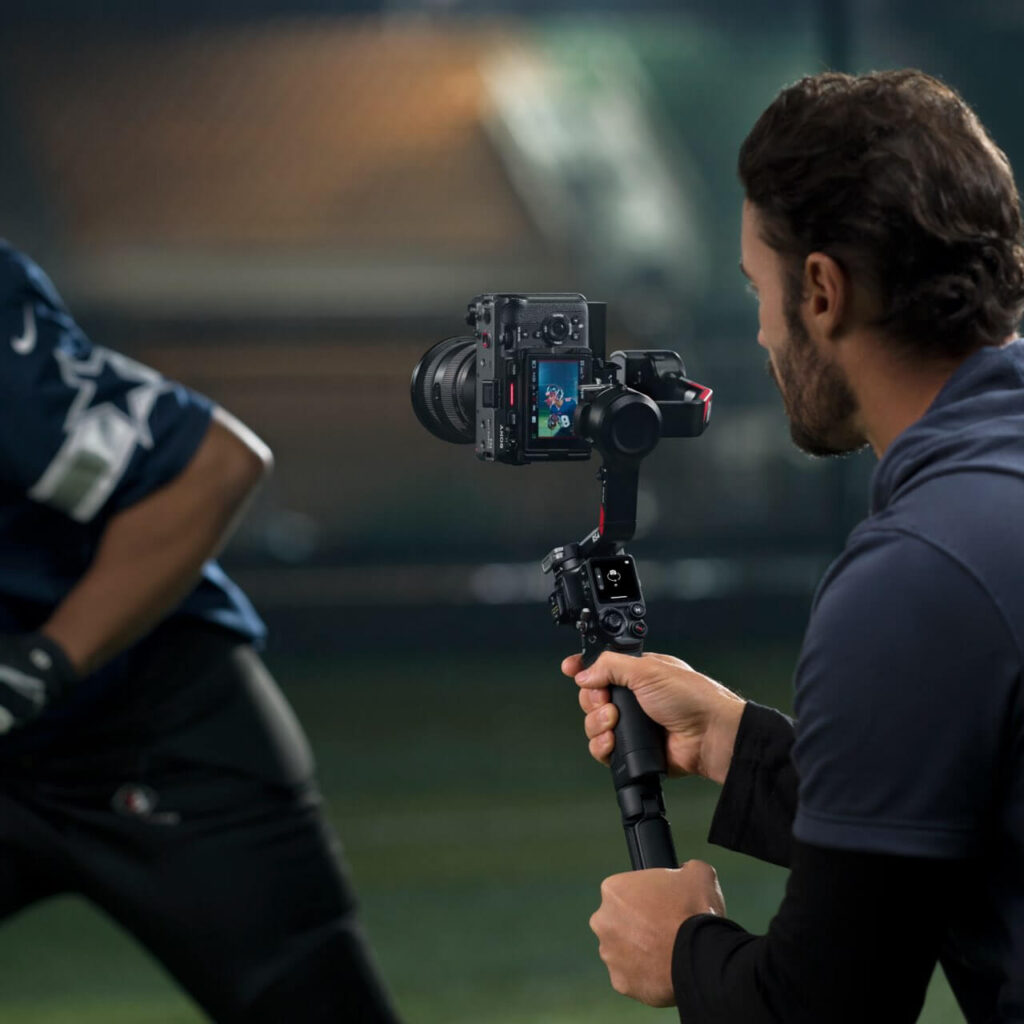Since its launch, the DJI Ronin stabilizer series has been leading the market with its advanced three-axis stabilization technology, powerful payload capacity, and intelligent features like automatic tracking and motion control. Each upgrade of the stabilizer brings more advanced technology, stronger performance, and more convenient design, providing creators with greater possibilities for innovative expression and igniting their creativity. On April 9th, DJI officially released the latest addition to the Ronin series, the DJI RS 4 handheld stabilizer.
Image: DJI
Exterior
· Second-generation native horizontal and vertical shooting board
The horizontal and vertical shooting board is designed as two detachable parts, making it quicker to switch between horizontal and vertical shooting.
· Added upper quick-release plate adjustment stop edge
It better secures the camera tilt during prolonged use.
· Three-axis Teflon coating
The RS4 upgrades from the single-axis Teflon coating on the RS 3 to the three-axis Teflon coating found on the RS 3 Pro version, providing a smoother three-axis adjustment experience even with the entry-level RS 4.
· Extended pitch axis
The RS 4’s pitch axis is elongated by 8.5mm compared to the RS 3, providing a larger leveling space. This allows for the installation of accessories such as ND filters on mainstream mirrorless cameras and lenses, expanding creative possibilities even further.
· rsa communication interface
The RS 4 upgrade includes the rsa communication interface from the RS 3 Pro version. This means that even the entry-level version supports DJI’s official DJI Ronin control handle and third-party handles, enriching the control ecosystem.
· Remote sensing mode switch
The RS 4 features a remote sensing mode switch position designed on the left side of the stabilizer screen, allowing for quick switching between remote sensing control of zoom and gimbal control. In contrast, the previous generation RS 3 could only perform zoom operations through the dial, making remote sensing control more convenient and efficient.
· Payload and weight
The RS 4 has the same payload capacity as the RS 3, both around 3kg. The weight of the RS 4 with the tripod is 1540g, which is 64g heavier than the RS 3 with the tripod.
· Battery
The RS 4 comes standard with the BG21 handle battery, which is the same as the RS 3’s. It has been tested and is compatible with the previous generation RS 3.
Image: DJI
Stability Performance
· The core technology of the RS 4 features a fourth-generation stabilization algorithm
The RS 4 optimizes the gimbal control algorithm, balancing the stabilizer’s stabilization capability with the actual shooting experience in different scenarios. This enhances the handheld shooting experience, synchronizing performance with activities like walking or running.
· All-new vertical shooting stabilization optimization
The vertical shooting algorithm of the RS 4 has been further optimized compared to the RS 3, allowing for steady capture of running shots, low-angle shots, and other vertical shooting scenes. The stabilization performance for vertical shooting has been significantly enhanced.
Shooting Operations
One of the highlights of the RS 4 upgrade is its horizontal and vertical shooting switch. Through practical operation, the RS 4 can switch between horizontal and vertical shooting within 15 seconds, making it arguably the fastest in the industry. In contrast, the previous generation RS 3 required the purchase of additional vertical shooting accessories for such switching.
The quick-release plate of the previous RS 3 generation obstructed the manual zoom operation of some lenses by blocking the zoom ring’s rotation. The quick-release plate of the RS 4 is slightly shorter than that of the RS 3, making it more convenient to use manual zoom with certain lenses without obstruction.
The addition of the upper quick-release plate adjustment stop edge effectively prevents the stabilizer from experiencing angle deviation due to loosening of the quick-release plate during use with heavier cameras or prolonged use.
The RS 4 still features DJI’s unique automatic axis locking system. Compared to the RS 3, the second-generation automatic axis locking system has a smaller virtual position, significantly reducing the shaking of the device when locked.
The RS 4’s automatic screen lock feature prevents accidental touches and displays commonly used gimbal parameters. Additionally, it reduces screen brightness to conserve battery power.
Conclusions
The RS 4 shows significant improvements in usability, especially in the way it switches between horizontal and vertical shooting, saving photographers considerable time during transitions. Upgrades such as remote sensing mode switching and an extended pitch axis, among others, enhance both the appearance and operational systems, offering users more creative shooting possibilities. Personally, I believe the RS4 is a more mature handheld stabilizer compared to the RS3. It’s suitable for users of the RSC2 and earlier stabilizer versions to upgrade, while RS3 users can upgrade as needed.
Pricing and Availability
You can get your hands on all of the above right now at the DJI store and other retailers. The DJI RS 4 is priced starting from $549, with various bundles and combinations available. For more information, visit https://store.dji.com/.
